Exploring Hazelnut and Peanut Diversity: A Comprehensive Summary Introduction: Hazelnuts and peanuts are two popular nut varieties that have been enjoyed by millions of people worldwide. Besides their delicious taste, these nuts offer various health benefits and are key ingredients in a wide range of culinary creations. In recent years, there has been heightened interest in researching and understanding the diversity within hazelnuts and peanuts. This article provides a comprehensive summary of the genetic diversity, growing conditions, commercial significance, and potential future of these nut varieties. 1. Hazelnut Diversity: 1.1. Genetic Diversity: The hazelnut (Corylus spp.) is a diverse species that includes several cultivated varieties. Genetic studies have revealed a considerable range of genetic diversity within hazelnuts, which can impact their growth, yield, and resistance to diseases and environmental stressors. 1.2. Growing Conditions: Hazelnuts thrive in temperate climates with well-drained soil. They are typically grown in regions such as Turkey, Italy, and the Pacific Northwest of the United States. Different cultivars exhibit variations in their preferences for temperature, soil type, and moisture levels. 1.3. Commercial Significance: Hazelnuts are a valuable agricultural crop, with global demand driven by the food industry, particularly the chocolate and confectionery sectors. Additionally, the rise of plant-based diets and the increasing popularity of hazelnut-based spreads have contributed to its commercial significance. 1.4. Future Prospects: With ongoing research on hazelnut breeding, disease resistance, and improved orchard management practices, the hazelnut industry is poised for growth. Emerging markets and the development of new cultivars with enhanced traits may further expand the global hazelnut trade.
nuts
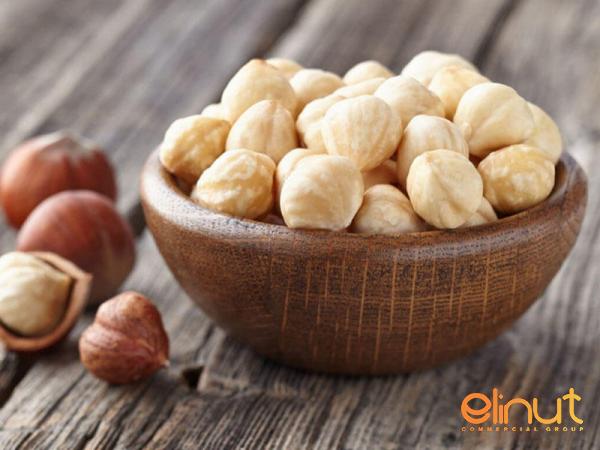 2. Peanut Diversity: 2.1. Genetic Diversity: Peanuts (Arachis hypogaea) exhibit considerable genetic diversity, with variations in their morphology, oil composition, and agronomic traits. Genetic studies have identified several wild species of peanuts that contribute to the genetic pool of cultivated varieties. 2.2. Growing Conditions: Peanuts prefer warm climates and well-drained sandy soil. Major peanut-producing nations include China, India, the United States, Nigeria, and Sudan. Different cultivars exhibit variations in their tolerance to conditions such as drought, pests, and diseases. 2.3. Commercial Significance: Peanuts are one of the most widely consumed and traded nuts globally. They are used for a range of products, including peanut butter, snack items, and as ingredients in confectionery and baked goods. Peanut oil is also commonly extracted for cooking purposes. 2.4. Future Prospects: The peanut industry faces challenges such as climate change, diseases, and allergenic concerns. Researchers are focusing on breeding for improved traits, including disease resistance, drought tolerance, and allergen reduction. Technological advancements and sustainable farming practices are expected to shape the future of peanut cultivation. 3. Comparison and Contrast: 3.1. Flavor and Culinary Applications: Hazelnuts are revered for their rich, nutty flavor, often associated with confections, chocolates, and baked goods. Peanuts, on the other hand, have a distinct earthy taste and are prominent in savory dishes, snacks, and peanut butter. 3.2. Nutritional Profiles: Both hazelnuts and peanuts are excellent sources of healthy fats, protein, vitamins, and minerals. Hazelnuts are slightly lower in calories compared to peanuts, but both nuts provide essential nutrients and are included in well-balanced diets. 3.3. Health Benefits: The consumption of hazelnuts and peanuts has been associated with various health benefits, such as reducing the risk of heart disease, promoting brain health, and aiding in weight management. However, individual allergies and dietary considerations should be taken into account.
2. Peanut Diversity: 2.1. Genetic Diversity: Peanuts (Arachis hypogaea) exhibit considerable genetic diversity, with variations in their morphology, oil composition, and agronomic traits. Genetic studies have identified several wild species of peanuts that contribute to the genetic pool of cultivated varieties. 2.2. Growing Conditions: Peanuts prefer warm climates and well-drained sandy soil. Major peanut-producing nations include China, India, the United States, Nigeria, and Sudan. Different cultivars exhibit variations in their tolerance to conditions such as drought, pests, and diseases. 2.3. Commercial Significance: Peanuts are one of the most widely consumed and traded nuts globally. They are used for a range of products, including peanut butter, snack items, and as ingredients in confectionery and baked goods. Peanut oil is also commonly extracted for cooking purposes. 2.4. Future Prospects: The peanut industry faces challenges such as climate change, diseases, and allergenic concerns. Researchers are focusing on breeding for improved traits, including disease resistance, drought tolerance, and allergen reduction. Technological advancements and sustainable farming practices are expected to shape the future of peanut cultivation. 3. Comparison and Contrast: 3.1. Flavor and Culinary Applications: Hazelnuts are revered for their rich, nutty flavor, often associated with confections, chocolates, and baked goods. Peanuts, on the other hand, have a distinct earthy taste and are prominent in savory dishes, snacks, and peanut butter. 3.2. Nutritional Profiles: Both hazelnuts and peanuts are excellent sources of healthy fats, protein, vitamins, and minerals. Hazelnuts are slightly lower in calories compared to peanuts, but both nuts provide essential nutrients and are included in well-balanced diets. 3.3. Health Benefits: The consumption of hazelnuts and peanuts has been associated with various health benefits, such as reducing the risk of heart disease, promoting brain health, and aiding in weight management. However, individual allergies and dietary considerations should be taken into account.
Specifications of nuts
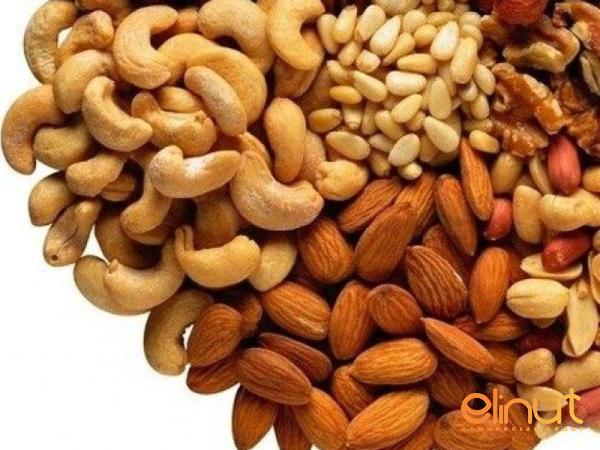 3.4. Commercial Importance: While hazelnuts have a significant presence in the chocolate and confectionery industries, peanuts have a broader range of applications across various culinary sectors, including the snack food industry, as a key ingredient in processed foods, and as a source of cooking oil. Conclusion: Hazelnuts and peanuts are nut varieties that exhibit significant diversity in terms of genetic makeup, growing conditions, commercial significance, and culinary applications. Understanding the genetic diversity within these nuts can lead to enhanced cultivation practices, improved traits, and disease resistance. The commercial importance of these nuts is vast, with hazelnuts contributing to the confectionery industry and peanuts being widely consumed and traded globally. Research and advancements in breeding, disease management, and sustainability will play key roles in the future development of hazelnut and peanut cultivation, further expanding their diversity and commercial significance.Exploring Hazelnut and Peanut Diversity: A Comprehensive Summary Introduction: Hazelnuts and peanuts, two popular nut varieties, have gained global recognition for their delightful taste and numerous health benefits. As consumer demand for these nuts continues to grow, understanding their diversity becomes crucial for both the agricultural and culinary industries. This article provides a comprehensive summary of the genetic diversity, growing conditions, commercial significance, and potential future prospects of hazelnuts and peanuts. 1. Hazelnut Diversity: 1.1. Genetic Diversity: Hazelnuts, encompassing various cultivars within the Corylus spp. genus, showcase a significant level of genetic diversity. This diversity impacts their growth, yield, and resistance to diseases and environmental stressors. Researchers conduct genetic studies to identify the genetic characteristics that contribute to these traits, enabling the development of improved cultivars.
3.4. Commercial Importance: While hazelnuts have a significant presence in the chocolate and confectionery industries, peanuts have a broader range of applications across various culinary sectors, including the snack food industry, as a key ingredient in processed foods, and as a source of cooking oil. Conclusion: Hazelnuts and peanuts are nut varieties that exhibit significant diversity in terms of genetic makeup, growing conditions, commercial significance, and culinary applications. Understanding the genetic diversity within these nuts can lead to enhanced cultivation practices, improved traits, and disease resistance. The commercial importance of these nuts is vast, with hazelnuts contributing to the confectionery industry and peanuts being widely consumed and traded globally. Research and advancements in breeding, disease management, and sustainability will play key roles in the future development of hazelnut and peanut cultivation, further expanding their diversity and commercial significance.Exploring Hazelnut and Peanut Diversity: A Comprehensive Summary Introduction: Hazelnuts and peanuts, two popular nut varieties, have gained global recognition for their delightful taste and numerous health benefits. As consumer demand for these nuts continues to grow, understanding their diversity becomes crucial for both the agricultural and culinary industries. This article provides a comprehensive summary of the genetic diversity, growing conditions, commercial significance, and potential future prospects of hazelnuts and peanuts. 1. Hazelnut Diversity: 1.1. Genetic Diversity: Hazelnuts, encompassing various cultivars within the Corylus spp. genus, showcase a significant level of genetic diversity. This diversity impacts their growth, yield, and resistance to diseases and environmental stressors. Researchers conduct genetic studies to identify the genetic characteristics that contribute to these traits, enabling the development of improved cultivars.
Buy nuts
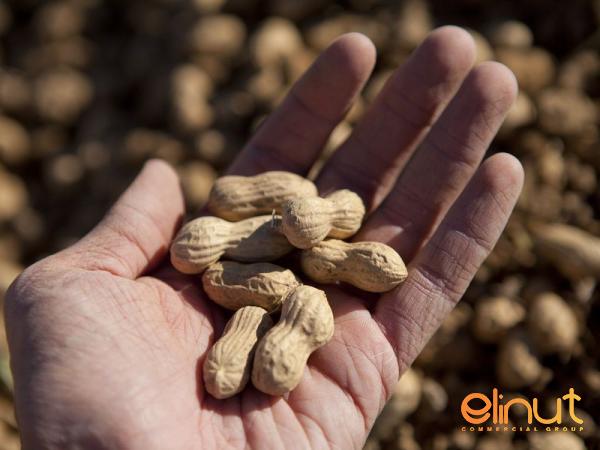 1.2. Growing Conditions: Hazelnuts flourish in temperate climates and require well-drained soil for optimal growth. Regions such as Turkey, Italy, and the Pacific Northwest of the United States have favorable conditions for hazelnut cultivation. Cultivars may exhibit variations in their preferences for temperature, soil type, and moisture levels, necessitating tailored growing practices. 1.3. Commercial Significance: Hazelnuts hold immense commercial importance, driven primarily by the food industry with a particular focus on the chocolate and confectionery sectors. The rise of plant-based diets and the increasing popularity of hazelnut-based spreads have also contributed to the growing demand for hazelnuts. Furthermore, the nutritional benefits offered by hazelnuts, including their healthy fats and various essential nutrients, make them an attractive ingredient for health-conscious consumers. 1.4. Future Prospects: With ongoing research on hazelnut breeding, disease resistance, and improved orchard management practices, the hazelnut industry is well-positioned for growth. Emerging markets, including Asia and North America, present significant opportunities for expansion. Additionally, the development of new cultivars with enhanced traits, such as improved yield and disease resistance, may further increase the global hazelnut trade. 2. Peanut Diversity: 2.1. Genetic Diversity: Peanuts, scientifically known as Arachis hypogaea, exhibit considerable genetic diversity. This diversity manifests through variations in morphology, oil composition, and agronomic traits. Genetic studies have identified wild species of peanuts that contribute to the genetic pool of cultivated varieties, providing potential sources for improved traits. 2.2. Growing Conditions: Peanuts thrive in warm climates with well-drained sandy soil. Major peanut-producing countries, including China, India, the United States, Nigeria, and Sudan, meet these conditions, allowing for significant cultivation. Different peanut cultivars may exhibit variations in their tolerance to conditions such as drought, pests, and diseases, necessitating tailored agricultural practices.
1.2. Growing Conditions: Hazelnuts flourish in temperate climates and require well-drained soil for optimal growth. Regions such as Turkey, Italy, and the Pacific Northwest of the United States have favorable conditions for hazelnut cultivation. Cultivars may exhibit variations in their preferences for temperature, soil type, and moisture levels, necessitating tailored growing practices. 1.3. Commercial Significance: Hazelnuts hold immense commercial importance, driven primarily by the food industry with a particular focus on the chocolate and confectionery sectors. The rise of plant-based diets and the increasing popularity of hazelnut-based spreads have also contributed to the growing demand for hazelnuts. Furthermore, the nutritional benefits offered by hazelnuts, including their healthy fats and various essential nutrients, make them an attractive ingredient for health-conscious consumers. 1.4. Future Prospects: With ongoing research on hazelnut breeding, disease resistance, and improved orchard management practices, the hazelnut industry is well-positioned for growth. Emerging markets, including Asia and North America, present significant opportunities for expansion. Additionally, the development of new cultivars with enhanced traits, such as improved yield and disease resistance, may further increase the global hazelnut trade. 2. Peanut Diversity: 2.1. Genetic Diversity: Peanuts, scientifically known as Arachis hypogaea, exhibit considerable genetic diversity. This diversity manifests through variations in morphology, oil composition, and agronomic traits. Genetic studies have identified wild species of peanuts that contribute to the genetic pool of cultivated varieties, providing potential sources for improved traits. 2.2. Growing Conditions: Peanuts thrive in warm climates with well-drained sandy soil. Major peanut-producing countries, including China, India, the United States, Nigeria, and Sudan, meet these conditions, allowing for significant cultivation. Different peanut cultivars may exhibit variations in their tolerance to conditions such as drought, pests, and diseases, necessitating tailored agricultural practices.
nuts + buy and sell
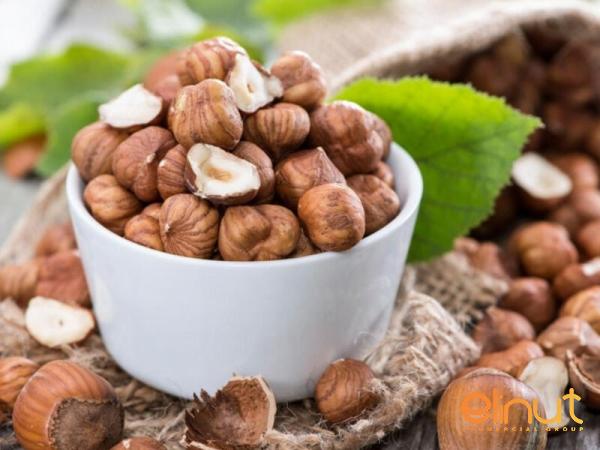 2.3. Commercial Significance: Peanuts are globally renowned for their widespread consumption and trade. They are incorporated into a broad range of products, including peanut butter, snack items, and confectionery. The extraction of peanut oil, another significant commercial application, finds use in cooking and widely consumed in various cuisines. 2.4. Future Prospects: The peanut industry faces challenges such as climate change, diseases, and allergenic concerns. Researchers are focusing on breeding for improved traits, such as disease resistance, drought tolerance, and allergen reduction. Technological advancements, such as precision farming and genetic engineering, coupled with sustainable farming practices, are expected to shape the future of peanut cultivation. 3. Comparison and Contrast: 3.1. Flavor and Culinary Applications: Hazelnuts are celebrated for their rich, nutty flavor, making them essential in confections, chocolates, and baked goods. On the other hand, peanuts offer a distinct earthy taste and are widely used in savory dishes, snack items, and as the primary ingredient in peanut butter. 3.2. Nutritional Profiles: Both hazelnuts and peanuts are excellent sources of healthy fats, protein, vitamins, and minerals. Hazelnuts, however, are slightly lower in calories compared to peanuts. Nevertheless, both nuts provide essential nutrients and can be included in well-balanced diets. 3.3. Health Benefits: Consuming hazelnuts and peanuts has been associated with various health benefits. Both nuts promote heart health, thanks to their monounsaturated fats and antioxidant content. Hazelnuts may support brain health, while peanuts’ protein content aids in weight management. However, individual allergies and dietary considerations should always be taken into account. 3.4. Commercial Importance: While hazelnuts play a significant role in the chocolate and confectionery industries, peanuts have a more diverse range of applications. Peanuts are prominent in the snack food industry, widely used as ingredients in processed foods, and extensively employed as a cooking oil. This broader commercial presence contributes to their widespread consumption and trade. Conclusion: Hazelnuts and peanuts exhibit a remarkable level of genetic diversity that affects their cultivation, commercial significance, and culinary applications. Understanding this diversity is vital for agricultural practices, breeding programs, and sustainable production. Hazelnuts’ commercial significance lies in the confectionery industry, while peanuts enjoy a broader range of applications across various culinary sectors. The research and advancements in breeding, disease management, and sustainability practices will continue shaping the future of hazelnut and peanut cultivation, expanding their diversity and enhancing their commercial significance. As the demand for these nuts grows, their genetic diversity and adaptability will play key roles in ensuring a sustainable and thriving industry.
2.3. Commercial Significance: Peanuts are globally renowned for their widespread consumption and trade. They are incorporated into a broad range of products, including peanut butter, snack items, and confectionery. The extraction of peanut oil, another significant commercial application, finds use in cooking and widely consumed in various cuisines. 2.4. Future Prospects: The peanut industry faces challenges such as climate change, diseases, and allergenic concerns. Researchers are focusing on breeding for improved traits, such as disease resistance, drought tolerance, and allergen reduction. Technological advancements, such as precision farming and genetic engineering, coupled with sustainable farming practices, are expected to shape the future of peanut cultivation. 3. Comparison and Contrast: 3.1. Flavor and Culinary Applications: Hazelnuts are celebrated for their rich, nutty flavor, making them essential in confections, chocolates, and baked goods. On the other hand, peanuts offer a distinct earthy taste and are widely used in savory dishes, snack items, and as the primary ingredient in peanut butter. 3.2. Nutritional Profiles: Both hazelnuts and peanuts are excellent sources of healthy fats, protein, vitamins, and minerals. Hazelnuts, however, are slightly lower in calories compared to peanuts. Nevertheless, both nuts provide essential nutrients and can be included in well-balanced diets. 3.3. Health Benefits: Consuming hazelnuts and peanuts has been associated with various health benefits. Both nuts promote heart health, thanks to their monounsaturated fats and antioxidant content. Hazelnuts may support brain health, while peanuts’ protein content aids in weight management. However, individual allergies and dietary considerations should always be taken into account. 3.4. Commercial Importance: While hazelnuts play a significant role in the chocolate and confectionery industries, peanuts have a more diverse range of applications. Peanuts are prominent in the snack food industry, widely used as ingredients in processed foods, and extensively employed as a cooking oil. This broader commercial presence contributes to their widespread consumption and trade. Conclusion: Hazelnuts and peanuts exhibit a remarkable level of genetic diversity that affects their cultivation, commercial significance, and culinary applications. Understanding this diversity is vital for agricultural practices, breeding programs, and sustainable production. Hazelnuts’ commercial significance lies in the confectionery industry, while peanuts enjoy a broader range of applications across various culinary sectors. The research and advancements in breeding, disease management, and sustainability practices will continue shaping the future of hazelnut and peanut cultivation, expanding their diversity and enhancing their commercial significance. As the demand for these nuts grows, their genetic diversity and adaptability will play key roles in ensuring a sustainable and thriving industry.





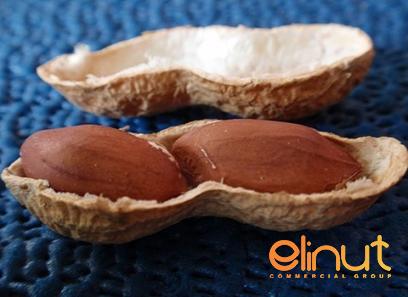

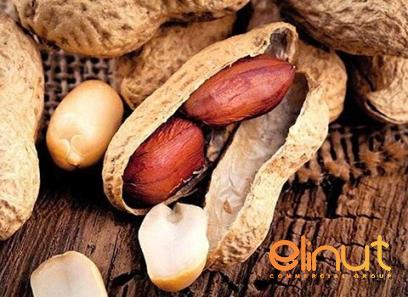
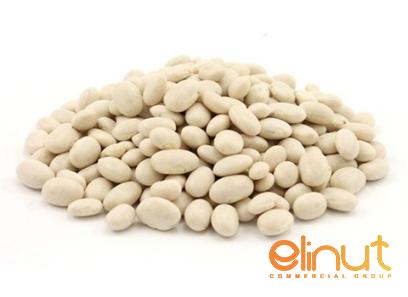


Your comment submitted.